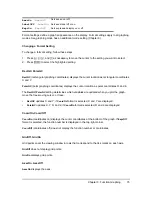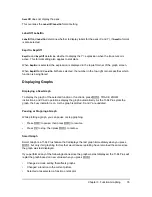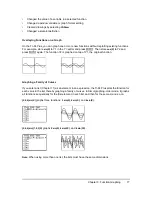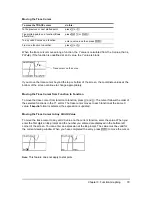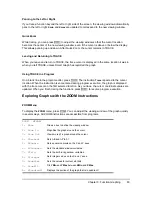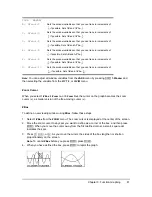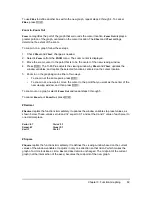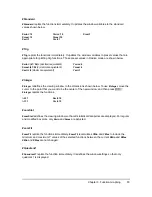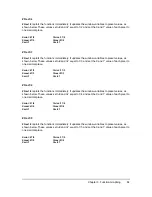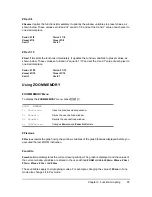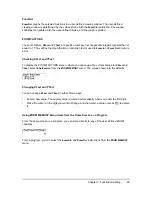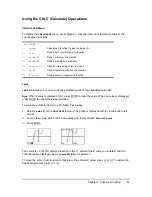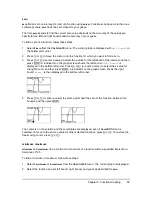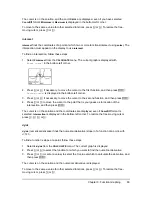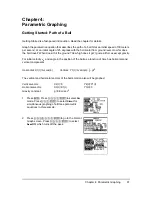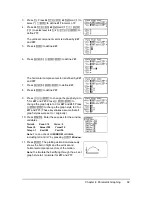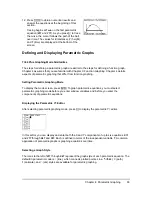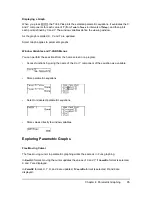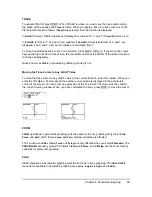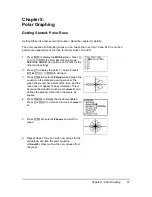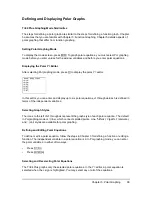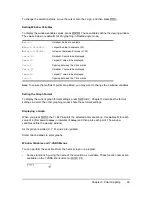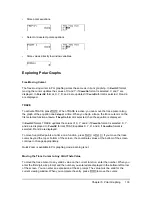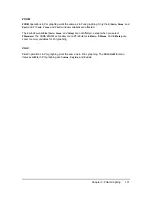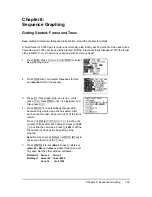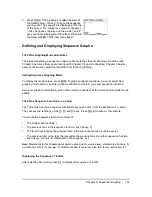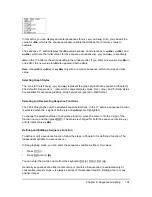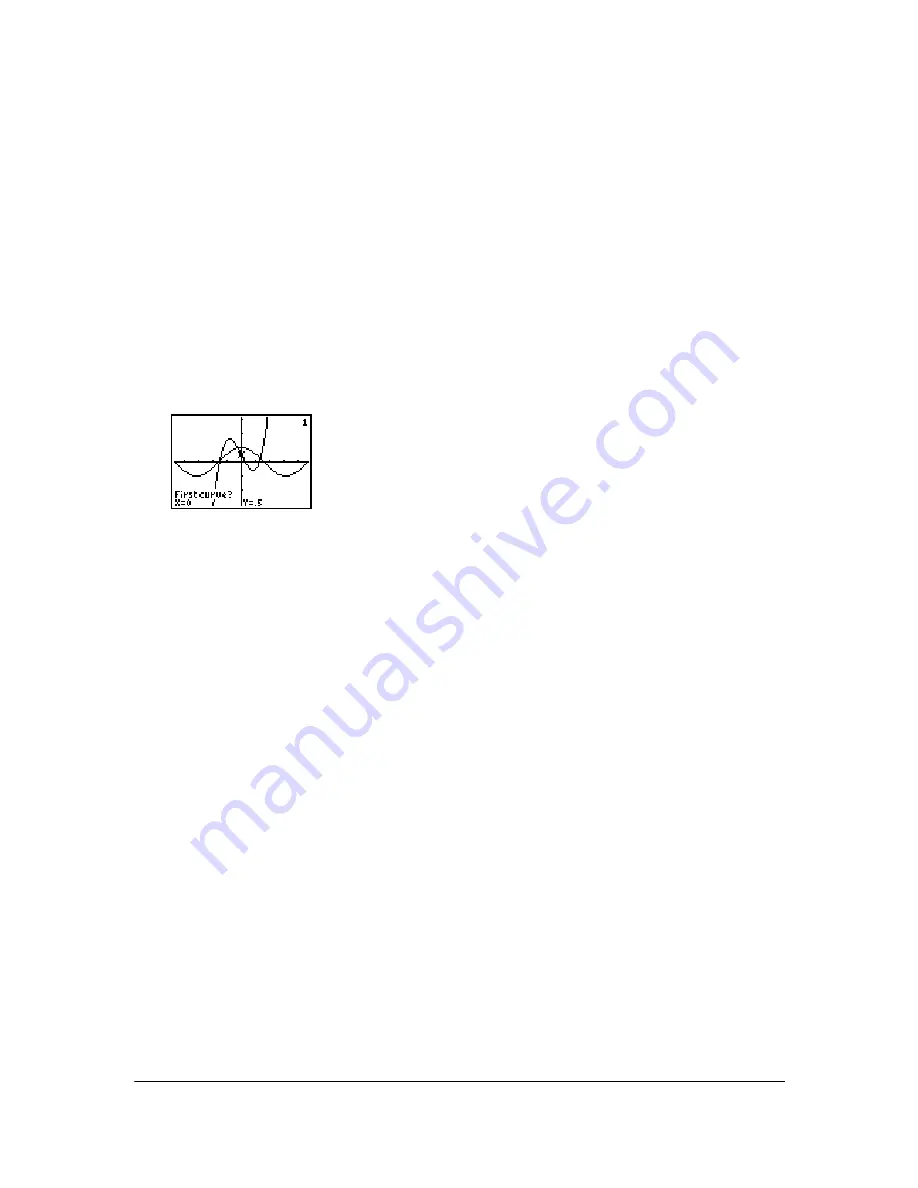
Chapter 3: Function Graphing
89
The cursor is on the solution, and the coordinates are displayed, even if you have selected
CoordOff
format;
Minimum
or
Maximum
is displayed in the bottom-left corner.
To move to the same x-value for other selected functions, press
}
or
†
. To restore the free-
moving cursor, press
|
or
~
.
intersect
intersect
finds the coordinates of a point at which two or more functions intersect using
solve(
. The
intersection must appear on the display to use
intersect
.
To find an intersection, follow these steps.
1. Select
5:intersect
from the
CALCULATE
menu. The current graph is displayed with
First curve?
in the bottom-left corner.
2. Press
†
or
}
, if necessary, to move the cursor to the first function, and then press
Í
.
Second curve?
is displayed in the bottom-left corner.
3. Press
†
or
}
, if necessary, to move the cursor to the second function, and then press
Í
.
4. Press
~
or
|
to move the cursor to the point that is your guess as to location of the
intersection, and then press
Í
.
The cursor is on the solution and the coordinates are displayed, even if
CoordOff
format is
selected.
Intersection
is displayed in the bottom-left corner. To restore the free-moving cursor,
press
|
,
}
,
~
, or
†
.
dy/dx
dy/dx
(numerical derivative) finds the numerical derivative (slope) of a function at a point, with
H
=1
â
L
3.
To find a function’s slope at a point, follow these steps.
1. Select
6:dy/dx
from the
CALCULATE
menu. The current graph is displayed.
2. Press
}
or
†
to select the function for which you want to find the numerical derivative.
3. Press
|
or
~
(or enter a value) to select the X value at which to calculate the derivative, and
then press
Í
.
The cursor is on the solution and the numerical derivative is displayed.
To move to the same x-value for other selected functions, press
}
or
†
. To restore the free-
moving cursor, press
|
or
~
.

